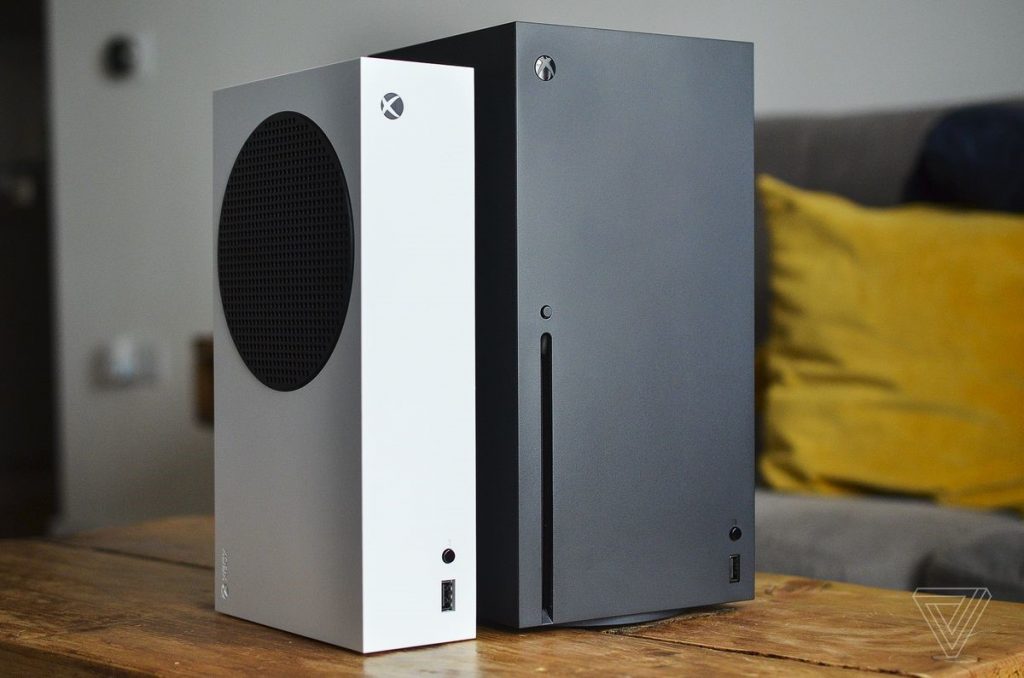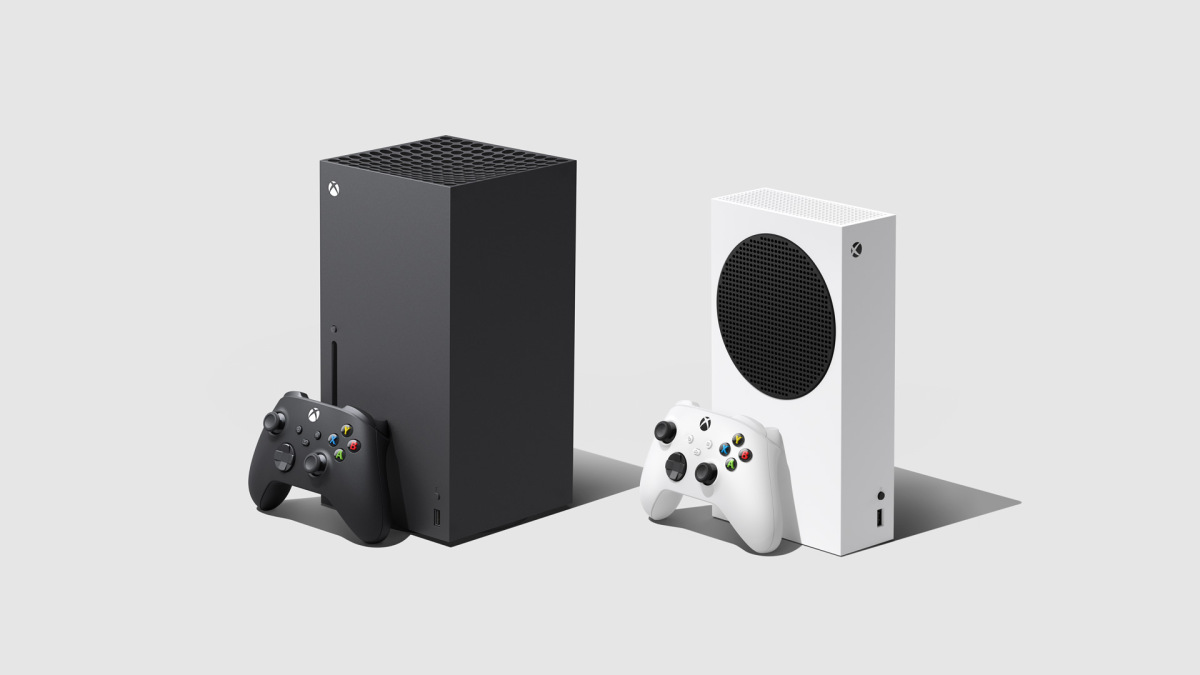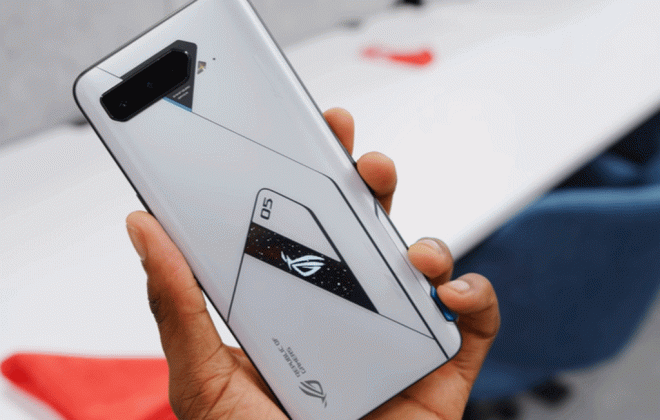2Gule to Ship the NEW XBOX Series X & S
2020 has been such a rollercoaster year and we know almost everybody has been WORKING & WORKING & WORKING but you know what they say, WORK WITHOUT PLAY MAKES JOHN A DULL BOY & at @2GuleOfficial, we know this which is why we have decided to remind you about the brand new XBOX Series X & S that will be shipping this November.
Branded as the “next-generation of Xbox gaming”, expect games to look better (thanks to more powerful graphics hardware and built-in support for more realistic lighting technology) and feel more responsive in some cases (thanks to support for frame rates of up to 120fps). Games should also load quicker because both consoles now include fast solid-state storage, a big improvement over the mechanical hard drive included in the Xbox One.
THE SERIES S AND SERIES X ARE TWO VERY DIFFERENT CONSOLES
Microsoft’s new consoles give you a lot more freedom with how you play its new games, but depending on where you choose to play them, you won’t get exactly the same experience. The Xbox Series X is a much more powerful machine than the Series S or the current Xbox One, for example, which will have a big impact on performance.
The Xbox Series S, will launch on November 10th for $299, $200 less than the $499 Series X that will launch on the same day.
The differences between the Xbox Series S and Series X are more substantial and are likely to have a big impact on how games look. While Microsoft says the Series X is targeting running games at 60fps at a full 4K resolution, the Series S will instead target a lower 1440p resolution at 60fps. It’s a big power disparity, similar to what we saw between the Xbox One and the Xbox One X, but this time, the two consoles are going to be available on day one, rather than releasing years apart. More to note, the Series X comes with a disc drive whereas the Series S is digital only (Can play games off the X- CLOUD)
For more information about their differences, Microsoft has a good rundown of the main differences between the Xbox Series X and the Series S on its website. Both have 8-core CPUs, although the X has a slightly higher maximum clock speed of 3.8GHz, rather than 3.6GHz on the Series S. Both support expandable storage of up to 1TB via an expansion card, both output over HDMI 2.1, and both are backward compatible with “thousands” of Xbox One, Xbox 360, and original Xbox games. Both support hardware-accelerated ray tracing for more realistic lighting in games, both support Dolby’s high-end Atmos audio technology, and both will support the Dolby Vision HDR standard. They’re also both backward compatible with all officially licensed Xbox One accessories like controllers and headsets — although there are no plans to support the Kinect camera.
There are, however, BIGGEST differences between the two. The Series X has a 4K Ultra HD Blu-ray drive, but the Series S is digital-only, so you’ll have to download your games rather than buy them on disc. And yet, the disc-based X also has double the amount of internal storage with 1TB as opposed to 512GB, and more RAM at 16GB compared to 10GB. Physically, the Series S is also a lot smaller than the Series X; Microsoft calls the console its “smallest Xbox ever.”

Perhaps the most significant differences are in the graphics department. Although both consoles use AMD’s RDNA 2 graphics architecture, the Series X has 52 compute units. That’s not only more than double the 20 compute units you’ll find in the Series S, but they’re also clocked faster at 1.825GHz compared to 1.565GHz. In total, that means the Series X has 12.15 teraflops of graphical horsepower according to Microsoft, compared to 4 teraflops for the Series S.
That should make the Xbox Series X a shade more powerful than the PS5 in the graphics department, too. While Sony’s consoles are also based on AMD’s RDNA 2 architecture, both models of the PS5 clock in with 10.28 teraflops of GPU power. They’ve got a smaller number of compute units (36), but their maximum cap is higher at 2.23GHz. They’ve also got 8-core CPUs, but they’re clocked at 3.5GHz. However, it’s important to note that the PS5’s CPU and GPU clock speeds are variable based on the total workload, so it’s not quite an apples-to-apples comparison with the new Xbox consoles. This approach could benefit the PS5 in certain scenarios but limit it in others. Otherwise, the PS5’s specs on paper are similar to the Series X. It has 16GB of RAM, 825GB of storage, and a 4K Ultra HD Blu-ray drive.
Like Microsoft, Sony also has a step-down digital-only version of its next console, but here, the differences are a lot more basic. The lack of a disc drive means that the digital console is a little slimmer, but otherwise, PlayStation CEO Jim Ryan tells CNET that its two consoles are “identical products.” That means we shouldn’t see the same power disparity as Microsoft has.
XBOX SERIES X VS SERIES S VS PS5
| Categories | Xbox Series X | Xbox Series S | PS5 | PS5 (digital-only) |
| CPU | 8-core AMD Zen 2 CPU @ 3.8GHz (3.6GHz with SMT Enabled) | 8-core AMD Zen 2 CPU @ 3.6GHz (3.4GHz with SMT Enabled) | 8x Zen 2 Cores @ 3.5GHz with SMT (variable frequency) | 8x Zen 2 Cores @ 3.5GHz with SMT (variable frequency) |
| GPU | AMD RDNA 2 GPU 52 CUs @ 1.825GHz | AMD RDNA 2 GPU 20 CUs @ 1.565GHz | AMD RDNA 2 GPU 36 CUs @ 2.23GHz (variable frequency) | AMD RDNA 2 GPU 36 CUs @ 2.23GHz (variable frequency) |
| GPU Power | 12.15 TFLOPS | 4 TFLOPS | 10.28 TFLOPs | 10.28 TFLOPs |
| RAM | 16GB GDDR6 RAM | 10GB GDDR6 RAM | 16GB GDDR5 RAM | 16GB GDDR5 RAM |
| Performance Target | Target 4K @ 60 FPS. Up to 8K. Up to 120 FPS | Target 1440p @ 60 FPS. Up to 120 FPS | Target TBD. Up to 8K. Up to 120 FPS | Target TBD. Up to 8K. Up to 120 FPS |
| Storage | 1TB PCIe Gen 4 NVMe SSD (2.4GB/sec uncompressed, 4.8GB/sec compressed) | 512GB PCIe Gen 4 NVMe SSD (2.4GB/sec uncompressed, 4.8GB/sec compressed) | 825GB PCIe Gen 4 NVMe SSD (5.5GB/sec uncompressed, typical 8-9GB/sec compressed) | 825GB PCIe Gen 4 NVMe SSD (5.5GB/sec uncompressed, typical 8-9GB/sec compressed) |
| Expandable Storage | 1TB Expansion Card | 1TB Expansion Card | NVMe SSD Slot | NVMe SSD Slot |
| Backward Compatibility | “Thousands” of Xbox One, Xbox 360, original Xbox games. Xbox One accessories. | “Thousands” of Xbox One, Xbox 360, original Xbox games. Xbox One accessories. | “Overwhelming majority” of PS4 games | “Overwhelming majority” of PS4 games |
| Disc Drive | 4K UHD Blu-ray | None | 4K UHD Blu-ray | None |
| Display Out | HDMI 2.1 | HDMI 2.1 | HDMI 2.1 | HDMI 2.1 |
| MSRP | $499 | $299 | Unannounced | Unannounced |
It’ll be impossible to know the impact Microsoft’s hardware differences will have on gaming performance until we see them running games in the real world. But the main difference Microsoft is talking about right now is resolution. The Series S targets 1440p, while the Series X targets 4K, aka 2160p (although it will technically support resolutions of up to 8K). Despite the differences in resolution, Microsoft says both are targeting frame rates of 60 frames per second but can support up to 120fps.
For more detailed article on the 2 consoles, visit https://www.theverge.com/21432635/xbox-series-x-s-release-date-news-price-features-specs-hardware-games
The 2 consoles will be available for; XBOX Series X at UGX 1,600,000, XBOX Series S at UGX 2,600,000 from #2GULE



